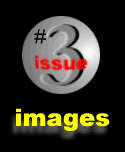


| Startle and the Film Threat- Scene |
|
Works Cited 1 Dennis Fischer, Horror Film Directors,
1931-1990, (Jefferson North Carolina, 1991): 666.
2 Bansak, Edmund G. Fearing the Dark: The Val Lewton
Career, (Jefferson, North Carolina, 1995): 133.
3 Carney Landis and William A. Hunt in their The
Startle Pattern. New York: Farrar & Rinehart, 1939.
4 Page 377 in Peter J. Lang, Margaret M. Bradley, and
Bruce N. Cuthbert, "Emotion, Attention, and the Startle
Reflex," Psychological Review 97:3 (1990): 377-395.
5 Page 487 from Scott R. Vrana, Ellen L. Spence, and
Peter J. Lang, "The Startle Probe Response: A New Measure of
Emotion?," Journal of Abnormal Psychology 97:4
(1988): 487-491.
6 See Dorine M. Jansen and Nico H. Frijda,
"Modulation of the Acoustic Startle Response by Film-Induced
Fear and Sexual Arousal," Psychophysiology 31
(1994): 565-571.
7 The character presence need not always be human. See The
Hidden (1987) for a threat scene where a dog serves in the
identificatory protagonist position of a startle effect. Filmed
at a dog's-eye level, a cute mutt approaches a female stripper
who has just fallen to her death in an alley. The corpse's eyes
(an alien lifeform occupies her body) pop open (startle cue) and
the alien/stripper lunges for the dog. The obvious implication,
proven by countless outings by Lassie and Rin Tin Tin, is that
humans can strongly identify with dogs and other domesticated
animals. Animated characters can also serve for character
identification. While watching a videotape of The Land Before
Time (1988), my children were noticeably startled during a
threat scene depicting a Tyrannosaurus attack on the film's
anthropomorphic, kid-like dinosaurs.
8 Most startle effects rely on a sound bump, a sudden
burst of sound effects, dialogue, and/or music. While many
startle effects rely on symphonic bursts of sound, a few single
element sound bursts can be heard, like the powerful foley bump
at the end of The Stepford Wives. Katharine Ross slowly
climbs the stairs in her own home, searching for her children,
believing her husband to be conspiring with the local Men's Club
to manufacture better women, and is startled by her husband
(foley burst) who has snuck up behind her. Music, ominous and
discordant, unquestionably contributes to the fear state that
prepares the way for startle responses: Bernard Herrmann's Psycho-shower
screeches, John Williams' shark motif from Jaws, "Tubular
Bells" from The Exorcist. But music can do more
than set the mood. It can serve as the primary or sole auditory
stimulus for startle. A massive symphonic music burst in Roger
Corman's House of Usher heralds Vincent Price's
unexpected entry into the film. In Repulsion, Polanski
uses a solo music burst in a startle effect that turns on the
discovery of a skinned rabbit corpse inside Deneuve's handbag.
While startle effects obviously depend on the sheer loudness of
sound bursts, I suspect that the inchoate, disharmony of many
sound effects (exploited by odd instruments and synthetic sound
combinations) stimulates anxiety in viewers who are attempting to
maintain some sense of and orientation to a film's aural setting.
9 Robin Horton, "Tradition and Modernity
Revisited," in Rationality and Relativism, ed.
Martin Hollis and Steven Lukes (Cambridge, 1982): 201-260.
|